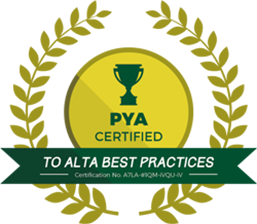

Citing an administrative error and the fact that extending the “effective date would better accommodate the interests of the many consumers and providers whose families will be busy with the transition to the new school year”, the Consumer Financial Protection Bureau is extending the TRID integrated disclosure effective date to October 1.
The extension is good news for those who were rushing to meet the August 1st deadline. But does the change affect you? Keep reading to find out.
What is TRID?
TRID, the new TILA RESPA integrated disclosure, is replacing the initial Truth-in-Lending disclosure & Good Faith Estimate for most closed-end mortgage loans. It’s also condensing the final Truth-in-Lending disclosure and HUD-1 Settlement Statement for most closed-end mortgage loans into one document.
After applying for a loan, consumers must submit the Loan Estimate. The Closing Disclosure must be turned in three days before closing. TRID was proposed to consolidate two TILA-RESPA forms into one, the Loan Estimate and the Closing Disclosure. The extension of the deadline is meant to provide consumers with more time to review the details of their mortgage.
Why the Change?
Back in June the Consumer Financial Protection Bureau announced that it would begin allowing the good-faith enforcement grace period that Congress and the mortgage industry had lobbied for. There was still a great amount of uncertainty, however. The CFPB promised flexibility without providing many details. It was suggested that the grace period would last at least through 2015, but there was still lots of uncertainty. If you know anything about the markets, you know uncertainty is never good. A large group of industry trade organizations asked Congress to push the CFPB to formalize the good-faith enforcement grace period, and that’s what TRID provides.
What are the Changes?
1. The application is considered received and the clock starts ticking for disclosure delivery when the following six items are received: name, income, Social Security number, property address, estimated value of the property, and mortgage loan amount sought.
2. Loan Estimate must be provided no later than three business days after receiving the application and no later than seven business day before closing. Closing Disclosure must be received by borrowers no later than three business days before closing.
3. A revised Loan Estimate must be received by the borrower no later than four business days prior to consummation and the revised Closing Disclosure must be received by borrower no later than three business days before closing.
4. New fees: fees for mortgage brokers or unaffiliated third-party services for which the borrower cannot shop will be paid to the creditor.
5. The creditor must provide a separate list of services for which the borrower may shop and identify at least one available provider for each service no later than the third business day after receiving the application.
6. The creditor is responsible for providing the Closing Disclosure, including HUD-1 information that the settlement agent was previously responsible for. The settlement agent is responsible for providing the Closing Disclosure to the seller.
For guidance on the ever-changing mortgage industry, come to Champion Title. Our blog is also full of market insights and analysis, so check back frequently.











Leave A Comment